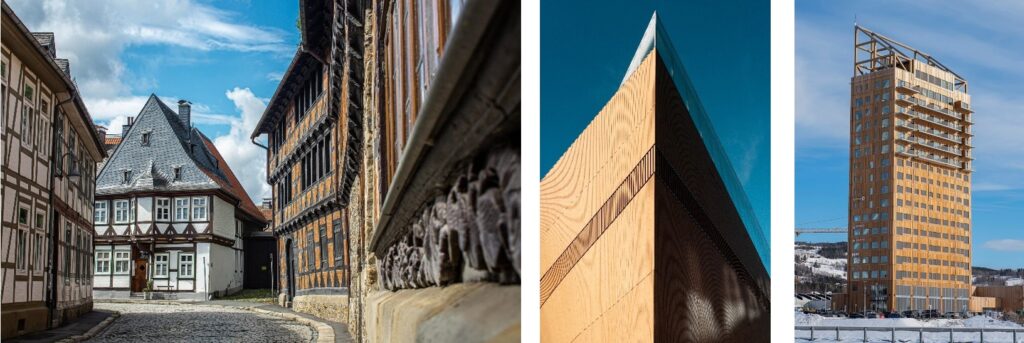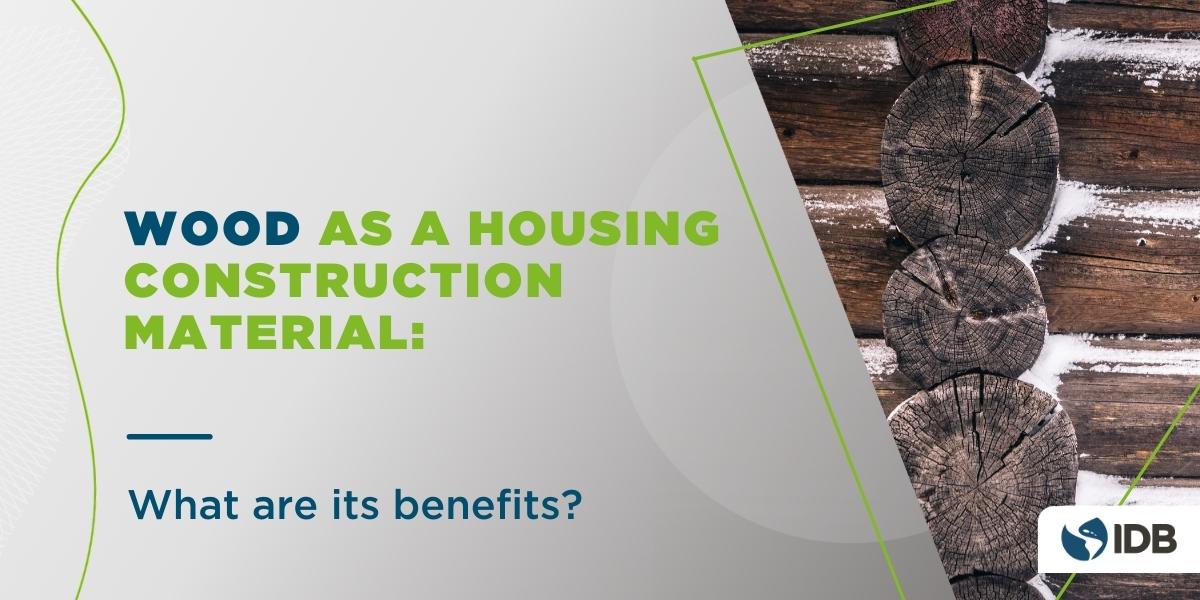Este artículo está también disponible en / This post is also available in: Spanish
Wood has been one of the most used building materials since the beginning of history. Although the use of steel, concrete or iron has brought significant advances to construction, wood has never lost its popularity. In fact, the number of wooden buildings around the world may surprise many readers. Did you know that countries such as Japan, Scotland or the United States are leaders in wood construction? Indeed, the proportion of new housing construction, both in whole and in part, can exceed 60% in Japan, 70% in Scotland, and 85% in the United States.
Despite of this popularity in other parts of the world, in Latin America and the Caribbean it is common to associate the construction of wooden houses with projects of low quality, low budget or small size. This stereotype is not correct. In recent decades, the wood industry has evolved thanks to the development of new technologies that allows the general use of this material in construction. For example, between 2008 and 2020, more than 50 wooden buildings with heights between 7 and 24 stories were built around the world. That’s more than 70 meters high!

Today we start a series of two blog posts in which some of the factors that have positioned wood as the optimal construction material of the 21st century are exposed. Its use will undoubtedly bring many benefits for the development of the region.
Why is wood the best material for housing construction in the 21st century?
In short, for its productivity and impact on the environment.
According to data from the United Nations (UN), the world population is expected to grow by 25% in the next 30 years, going from 7.7 billion people in 2020 to 9.7 billion in 2050. This translates into an increase in demand for resources, especially housing. In this sense, the World Bank estimates that, by 2030, the housing deficit will reach 240 million housing units. How countries deal with this deficit will be critical to ensuring global sustainable development.
When dealing with this great demand for housing construction, the sector must be responsible with the preservation of the environment. And it is that the construction sector has a double impact on the environment:
- The sector is responsible for a third of the world’s waste generation, whether produced by construction or demolition
- Housing construction represents 36% of final energy use in the world and 39% of CO2EQ globally

According to a 2022 study, there are six sectors that could cut global emissions by at least half by 2030; construction is one of them. The manufacture of houses with low carbon footprint materials is part of the solution to this problem and wood could be one of the options used.
Environmental benefits of wood construction
Wood construction has multiple benefits in environmental terms. Among them, we will dress some of the most relevant:
- It is the only renewable and recyclable construction material. If the forest is managed sustainably, the trees can be a renewable resource. In addition, wood also requires less energy to be processed.
- It can absorb carbon. Wood accumulates large amounts of CO2 and its industrialization generates lower greenhouse gas emissions than other materials. For example, producing a ton of wood generates 33 kilos of net emissions, compared to 264 kilos for cement and 694 kilos for steel.
- Produce less waste. The use of wood generates less waste and speeds up construction times
- Greater energy efficiency. Wood contributes to energy efficiency due to its ability to conduct heat, which makes it a better insulator than other materials. In fact, it is 400 times better than steel and 15 times better than concrete.

In short, processed wood construction not only adds value by serving as an active absorbent of CO2, but also significantly reduces emissions linked to the industrial construction process. In addition, in this process costs and possible emissions are reduced because it is more efficient in terms of energy consumption.
Which technical benefits does wood provide in construction?
In addition to the aforementioned advantages, there are also reasons why wood is a first-class construction element:
- Great flexibility and low weight. It is an optimal material to resist earthquakes and reduce the volume of foundations.
- High insulating capacity. It is capable of insulating heat up to six times more than brick, 15 times more than concrete and 400 times more than steel
- Fire resistance. In large-volume pieces, it has high resistance to fire and takes longer to collapse than steel structures.
- Construction speed and cost reduction. By offering the possibility of working on dry sites, it increases construction speed and lowers costs
Wood construction in Uruguay
In the next blog we will address the situation of this sector in Uruguay. The Inter-American Development Bank (IDB) has developed a participatory process with all the actors involved in the sector in this country. This initiative will allow the implementation of a roadmap of prioritized and governed actions with multisectoral and multilevel actors to overcome the barriers that have not made the development of this sector possible.
Although the forestry industry is highly relevant in Uruguay, where it contributes 4% of the national GDP (USD 2.1 billion), the wood housing construction sector is in its infancy. For this reason, and given that the restrictions Uruguay faces are probably similar to those of other Latin American and Caribbean countries, it will serve as an example to illustrate the situation in our region in the next blog.
Meanwhile, we invite you to write your opinion in the comments section, and of course, do not hesitate to share this blog on your social networks!
If you enjoyed this blog, sign up here to receive our monthly newsletter with all the blogs, news, and events from the IDB’s Housing and Urban Development Division
Text based on “Hoja de Ruta para el Fomento de la Vivienda Social en Madera en Uruguay”, by Juan José Ugarte, Andrés Sierra and Karen Codriansky; Inter-American Development Bank and Ministry of Housing and Territorial Planning of Uruguay


I absolutely love this article highlighting the incredible potential of wood as a construction material in the 21st century. It’s refreshing to see a shift towards embracing wood construction, especially considering its numerous environmental benefits.
The fact that wood is renewable and recyclable sets it apart from other construction materials. Sustainability is crucial in today’s world, and wood’s ability to absorb carbon and produce less waste makes it a clear winner in reducing our environmental footprint. I was astonished to learn that wood is not only a great insulator but also highly fire-resistant in large-volume pieces, which makes it even more versatile and practical.
Furthermore, the article’s focus on Latin America and the Caribbean is vital, as it challenges stereotypes surrounding wooden house construction in the region. It’s inspiring to see initiatives like the one by the Inter-American Development Bank in Uruguay, working towards overcoming barriers and promoting the use of wood in construction.
In a world where addressing the housing deficit and mitigating the impact of construction on the environment are paramount, wood emerges as a sustainable and efficient solution. I’m eagerly looking forward to the next blog post and learning more about the situation in Uruguay and its potential implications for the broader region.
Kudos to the author for shedding light on the transformative power of wood in the construction industry. This article is a fantastic resource for anyone interested in sustainable building practices and their impact on our planet.
I love this article! Thank you for posting an insightful article like this.